The great majority of visitors to wildlife
reserves are watchers of large mammals, especially so the celebrated carnivores,
the pachyderms and the large or rare antelope. A much smaller subset of wildlife
enthusiasts is comprised of the birdwatchers who take delight in even the
smallest and drabbest of the feathered folk. The birders often spend many
minutes (or even hours) deciphering the minutest of differences in plumage or
behaviour in order to identify the correct species to which an LBJ (little
brown job) belongs. Encountered even less often are the tree-and-flower-watchers
– they do exist, and it is very worthwhile spending some time in their company.
An awareness and appreciation of the splendour of the flora will enrich any
trip into the wilderness.
While it is accurate to claim that mammal-watchers
outnumber birdwatchers and other enthusiasts by a substantial amount, it would only
be fair to add that mammal-watchers occasionally do stop for a sighting of a
bird – provided that the bird is large and spectacular, such as a Southern
Ground-Hornbill or a species of stork or heron.
Two categories of birds, particularly, will halt
the peregrinations of any mammal-watchers through a park: the eagles and the
vultures. Both kinds are very photogenic – they are large and have immense
wingspans so that they are spied without difficulty and can be photographed
over quite long distances. Furthermore, they can be followed quite effortlessly
if they are spooked. They also occupy large ranges in a reserve – they can be encountered
repeatedly on separate occasions. Their habit of soaring at some altitude also
allows visitors to spot them often, especially when vultures circle above a
recent kill or eagles patrol their territories.
Throughout human history, the eagles have
managed their public relations splendidly well. We consider them as formidable
hunters, powerful in the air and on the ground in equal measure. Their posture
signals confidence, competence and intelligence. To us, they are majestic, so
much so, that they are portrayed on the national flags of several nations (Zambia,
Zimbabwe, Egypt, Mexico, Albania, and Serbia, for example). Various species of
eagle are also the national bird of a host of countries (such as the United
States, Germany, Scotland, Serbia, Albania, Mexico, Panama, Indonesia and the
Philippines, while the African Fish-Eagle is the national bird of Namibia,
Zambia and Zimbabwe).
In heraldry, the eagle represents fortitude and
action. Eagles appear on the ensigns and crests of countless individuals,
families, associations and villages, towns and cities, amongst others. The
eagle has always been used as a significant symbol – think of the emblem of the
Roman Empire with its imperial Aquila,
or think of Saint John the Evangelist, the most lofty and prophetic of the four
evangelists of the bible.
The classical literature of the antiquity of
western civilisation abounds with accolades for the eagle. Frequently, the
eagle is described as the king of birds. In the Iliad, Homer considers the eagle as the most perfect of birds –
certainly sent by Zeus as an omen. Following the Iliad and Odyssey, later
Greek and Latin writers commonly cite eagle omens.
Often, the collective noun that is used for a
group of eagles is ‘a convocation’ with its connotations of formality and
purpose. We speak of excellent game-spotters as being ‘eagle-eyed’, while a
person well versed in the law is called a ‘legal eagle’. All in all, the eagles
have captured our human imagination; they have even won our respect.
In general, the same can not be said about
vultures. Their reputation is lacklustre at best; at worst, their penchant for
carrion has ensured labels such as soiled, polluted, foul, foetid and quarrelsome.
Moreover, they are often perceived as being rather comical. If vultures were smaller,
I doubt that an average visitor to the wilderness would bother taking a look.
Only a single Old World vulture* is elevated to the status of a
national bird – in Serbia, both the eagle and the vulture share this
illustrious nomination. In heraldry, the vulture represents rapacity, but it is
chosen only very rarely as a symbol on important crests and insignia.
Generally, vultures are given a bad press. A large group of these birds
circling at altitude is referred to as a ‘kettle’; the company of several
vultures on a kill is called a ‘wake’ – at least, so say the ‘culture vultures’.
Classical Greek literature is often unclear about
the kind of large, predatory bird to which an author refers. In many instances,
the bird could have been a vulture or an eagle. The ‘winged hound’ that Zeus sent
to torment Prometheus may have been a vulture. The harpies too suggest a more
vulturine disposition – they
were incarnations of the gales of tempests and possessed the body
of a great predatory bird, with the head and breasts of a young woman, whose
hands ended in long, razor-sharp talons. Indeed, Ovid described them as
human-vultures, brutal, ferocious and forbidding agents of punishment.
The only ‘vulture’ that seems to have escaped
the disdain that is ingrained in ‘western culture’ for this group of birds is
the Andean condor (a New World vulture*,
quite different from the Old World vultures). The Andean condor is the only vulture
depicted on the flag of a single Andean nation – Ecuador. However, the Andean
condor does perch proudly on the coats of arms of Ecuador and several other South
American states, including Argentina, Peru and Venezuela. The Andean condor also
fares better as a national bird (namely of Ecuador, Chile, Colombia and Bolivia).
In the ancient civilisations of the Andean
region of South America, the condor shouldered an important role in mythology
and folklore. The mythology of various Andean cultures associated the condor with
the sun-god – thus the Andean condor was regarded as a quasi-deity who was the potentate
of the upper realm. Many Andean cultures revered this huge bird as a symbol of
power and health – purportedly the bones and organs of the Andean condor retained
medicinal powers. Sadly, to this day still, the rare Andean condor is hunted
for the supposed curative benefits of parts of its body.
In several African cultures, vultures too are
imbued with some positive attributes. Particularly in some South African
cultures, such as the amaZulu,
vultures are hunted, killed and traded as umuthi
(traditional medicine). Particularly the heads of vultures are claimed to
confer powers of clairvoyance, foresight and amplified intellect.
Both eagles and vultures are worthy of our
attention (as are all species that still survive despite our misguided,
rapacious exploitation of the planet and its inhabitants). Both are inexhaustibly
intriguing in their structure, abilities and behaviour. Rightfully, both groups
attract the attention even of non-birders.
Nevertheless, when we sing the praises of any
humans or animals, it is just also to point out those moments in the lives of
the performers that do not reflect glamorously on their prowess. A fair consideration
of their lives must also include those times when they are not in full control
of their look or their actions, when things go wrong, when they are not magnificent
or resplendent. On several occasions, I have had the good fortune to witness
instances of the appearance and behaviour of both eagles and vultures that have
brought forth more than a brief giggle. These are large birds – their size (as
it does in myself and other humans too) often betrays their attempts to appear
regal, majestic, fierce.
* The general term ‘vulture’ applies to large
birds that principally scavenge their food from animal cadavers. Importantly,
the deleterious, disease-causing bacteria present in carrion do not harm ‘vultures’
– in fact, these bacteria (otherwise very harmful to the majority of
vertebrates) flourish in the intestines of these large scavenging birds.
A characteristic of the plumage of many vulture
species leaves their heads (and often their necks too) covered only by very
small down feathers. Consequently, these parts often appear naked or only very
sparsely feathered. This lack of large feathers promotes convective heat loss
from the exposed skin of the head (and neck) of vultures – heat loss that is
vital since these birds often feed on carcasses at or near midday, exposed to
blazing sunlight.
Old World vultures live on the continents of
Africa, Asia and Europe, while the New World vultures and condors today exist
in central and South America. Interestingly, Old World vultures find carcasses
exclusively by sight, whereas some species of New World vulture have a good
sense of smell.
While the phylogenetic relationships of
‘vultures’ and birds of prey is in flux and await further, detailed research to
discombobulate the ancestral relationships between several groups of these
avian predators. What has been discovered is that Old World vultures are not
closely related genetically to the outwardly similar New World vultures and
condors. The similarities of form and habit shared by the two groups of
vultures are due to convergent evolution (that is, adaptation to the demands
and challenges of very similar life-histories), rather than stemming from an
inheritance of a set of adaptations from a recent common ancestor.
Recent research seems to indicate that the Old
World vultures are most closely related to the eagles, buzzards, kites and
hawks. This large group of predatory birds shares a common ancestor with the
New World vultures and condors, and both groups together then share a more
distant common ancestor with all falcons.
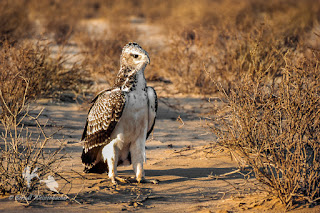
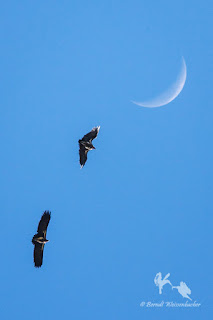
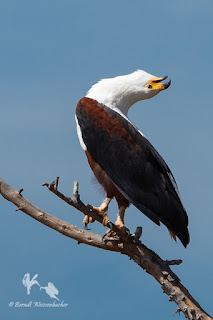

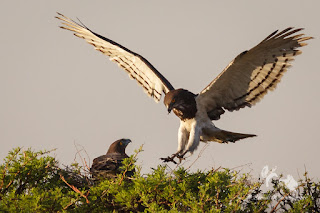
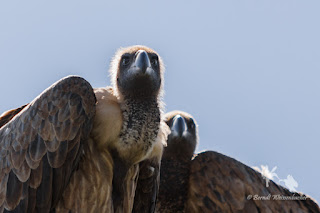
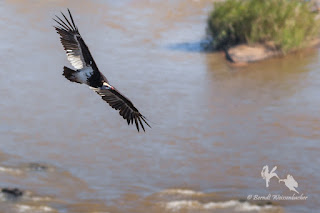
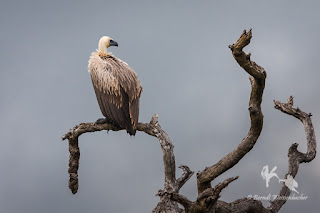
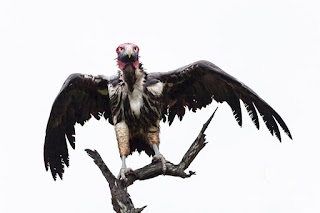
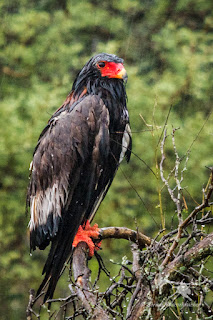
No comments:
Post a Comment